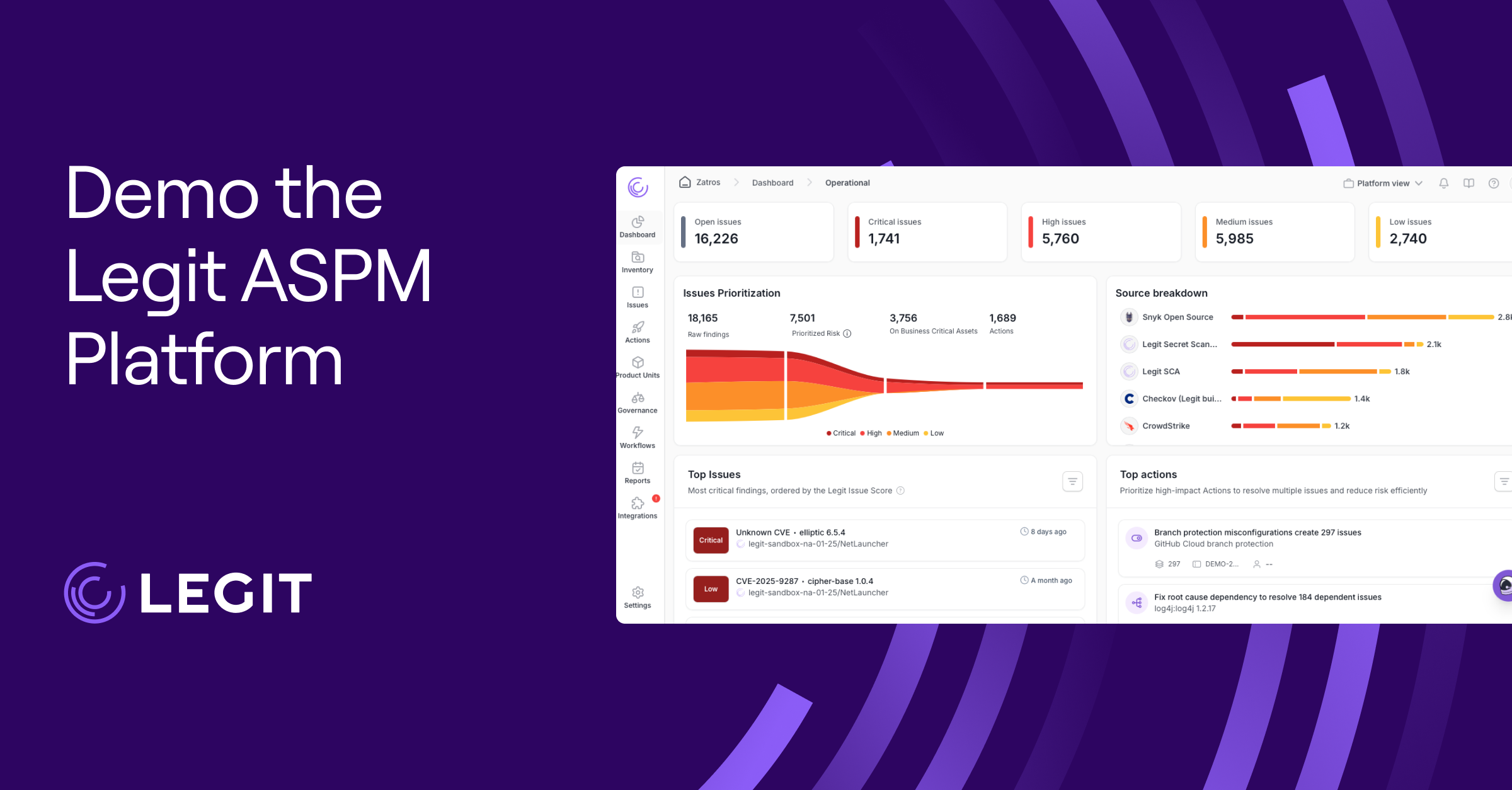Implementing an IT security framework can feel like a heavy lift, especially when juggling tight deadlines, growing toolsets, and complex compliance demands. But getting it right pays off. A standardized cybersecurity framework gives you a clear foundation for meeting regulatory expectations and strengthening security across your entire environment.
Whether you're in tech, financial services, healthcare, or any industry that relies on digital systems, a strong framework brings structure to your defenses and avoids gaps that attackers might exploit. Here’s a guide to common security frameworks and how to choose the right fit for your organization.
Cybersecurity Framework Definition
A cybersecurity framework is a structured set of guidelines that helps manage risk and strengthen overall security posture. Whether adopting a common security framework like the NIST Cybersecurity Framework (NIST CSF) or tailoring a hybrid approach, these resources typically guide efforts to identify risks, respond effectively, and recover quickly. They don’t lock you into specific tools or vendors, but offer a foundation to build upon.
Think of a framework for cybersecurity as both a blueprint and a communication tool. It aligns your technical controls with business objectives and regulatory requirements, enforcing consistent practices across teams, departments, and third-party vendors. These frameworks provide a clear basis for managing cybersecurity risk and help organizations make decisions based on consistent, proven practices.
Importance of Cybersecurity Frameworks
In security, not having a plan is a recipe for trouble, whether that’s taking too long to respond to a threat or lacking the documentation to prove compliance. Cybersecurity frameworks offer a practical way to take control, mapping out what to do, how to do it, and how to prove it’s getting done.
For IT and security teams, frameworks reduce guesswork by turning high-level goals into specific, repeatable actions. They also help you focus on what matters most: reducing risk, maintaining uptime, and meeting regulatory expectations without reinventing the wheel.
Many companies face overlapping cybersecurity industry standards, especially in regulated environments like finance and healthcare. A solid framework aligns compliance, audit readiness, and daily operations for ease. Plus, choosing the proper framework allows you to move from reactive fixes to measurable, consistent strategies more easily.
6 IT Security Framework Examples
There’s no shortage of cybersecurity frameworks, but the key is knowing which ones are widely trusted and what they offer. Some frameworks help you meet regulatory requirements, while others guide practical implementation or address industry-specific risks.
The following cybersecurity frameworks list includes some of the most widely adopted models, each offering a different path to stronger defenses and improved compliance.
1. NIST CSF
The NIST CSF is a go-to resource for organizations looking to build or improve their security programs. Initially developed for critical infrastructure, it’s since been embraced across industries due to its adaptability and clarity. The latest version, CSF 2.0, introduces Govern as the first of six core functions, followed by Identify, Protect, Detect, Respond, and Recover.
What makes NIST CSF stand out is how easy it is to tailor. You don’t need to implement every piece at once. Instead, focus on what makes sense for your organization and build from there. Whether you’re a small team trying to improve visibility or a global enterprise working on board-level risk reporting, CSF offers a shared language to work with.
2. ISO/IEC 27001 and 27002
ISO/IEC 27001 is the international standard for building an information security management system (ISMS). It outlines requirements for protecting data, managing risk, and complying with evolving regulations. ISO 27002 complements it with practical guidance on how to select and apply the proper security controls.
These two standards lead to a security program that can be independently audited and certified, which many customers and regulators look for. Organizations working with enterprise clients or expanding globally often adopt ISO 27001 to meet security expectations. It’s rigorous, but the payoff is a more mature, structured security posture that holds up under scrutiny.
3. NIST RMF
The NIST Risk Management Framework (RMF), outlined in NIST Special Publication 800-37, offers a detailed, seven-step process for integrating security and privacy into the system development lifecycle. It’s mandatory for U.S. federal agencies and heavily used by contractors and vendors supporting government operations.
What makes RMF unique is its depth. It walks you through preparation, categorization, control selection, implementation, assessment, authorization, and ongoing monitoring. While it may be too resource-heavy for some private-sector organizations, those operating in high-risk or highly regulated environments rely on RMF for its structure and accountability. It’s also a foundation for aligning with other NIST guidance, including SP 800-53.
4. COBIT
Control Objectives for Information and Related Technologies (COBIT) is a governance framework that connects IT operations and business strategy. Created by ISACA, it helps organizations manage risk, ensure regulatory compliance, and deliver measurable value through IT. It’s especially useful in finance and other sectors with strict oversight—where aligning internal controls with business goals isn’t optional.
The latest version, COBIT 2019, includes updated guidance for digital transformation, cloud adoption, and data governance. Unlike technical frameworks that focus on specific controls, COBIT looks at the big picture, making sure technology supports business objectives in accountable and auditable ways.
5. CIS Controls
Center for Internet Security (CIS) Controls are a highly focused, tactical framework designed to stop the most common types of cyberattacks. Now updated to version 8.1, the framework includes 18 top-level controls broken down into 153 safeguards prioritized by Implementation Groups (IGs). This structure helps organizations apply the right controls based on size, resources, and risk profile.
This framework prioritizes the critical security controls according to known attack patterns and maps them to practical defensive actions. The latest version also aligns with NIST CSF 2.0, introducing a Governance function and improving the clarity of control descriptions.
Many organizations adopt CIS Controls because they offer clear, actionable steps that even small teams can implement effectively. They’re often used alongside broader frameworks like NIST or ISO 27001 to help translate high-level goals into daily defensive actions.
CIS is a great place to start if you’re looking for a hands-on way to tighten security fast. It includes specific safeguards for asset management, secure configuration, and incident response planning.
6. SOC 2
System and Organization Controls 2 (SOC 2) is an audit framework that evaluates how service providers handle customer data. Designed by the American Institute of Certified Public Accountants (AICPA), it centers on five Trust Services Criteria: Security, Availability, Processing Integrity, Confidentiality, and Privacy.
While SOC 2 doesn’t prescribe specific controls, it requires you to prove your controls are in place and working overtime, typically through a third-party audit. Many SaaS vendors and cloud providers pursue SOC 2 because customers see it as the minimum requirement for doing business. It also plays a role in vendor risk management, where customers expect independent assurance that your environment meets modern security standards.
Additional Standards and Regulations
The examples above represent some of the most commonly used IT security frameworks, but well-known cybersecurity standards and regulations also play a similar role in shaping security programs. These standards often influence how teams implement controls, train staff, and monitor ongoing risks, making them essential to the broader cybersecurity landscape.
While not technically frameworks, The Payment Card Industry Data Security Standard (PCI DSS), the Health Insurance Portability and Accountability Act (HIPAA), and The General Data Protection Regulation (GDPR) provide detailed security and privacy requirements that organizations must follow to stay compliant within their industries. Sector-specific frameworks like the Health Information Trust Alliance (HITRUST) are also essential in healthcare industries, where regulatory compliance and operational rigor are essential.
Other significant resources include the NIST AI Risk Management Framework, which helps organizations govern AI responsibly and securely, and the NIST Secure Software Development Framework (SSDF), which guides security integration into every development lifecycle phase.
While these frameworks serve more specific use cases, they reflect the growing need to adapt foundational security practices to modern technologies and development workflows.
How to Choose an IT Security Framework
Start by looking at your industry, risk exposure, and compliance goals. Some organizations choose frameworks built for highly regulated sectors, while others adopt those that offer more flexibility and scalability. For example, organizations may choose ISO 27001 for its global recognition, NIST CSF for its modular structure, or COBIT to support governance and audit needs.
If you're a cloud provider working with the U.S. government, FedRAMP certification outlines the controls and processes needed to meet federal expectations.
Also consider how much structure your team needs. Some frameworks offer high-level guidance, while others provide detailed, tactical steps. Many organizations combine elements from multiple frameworks to support their security program, meet overlapping requirements, and scale with the business.
Meet IT Security Framework Standards With Legit Security
Legit Security helps you align with IT security frameworks by delivering continuous visibility and risk assessment. It maps your SDLC activities to relevant controls, highlights gaps in coverage, and tracks remediation progress over time, helping you move from one-time audits to ongoing assurance.
Gain the visibility needed to act before issues become incidents. Request a demo today.
Download our new whitepaper.


